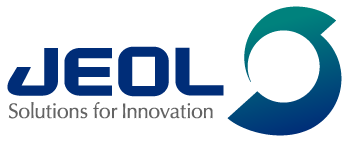In the past decade, transmission electron microscopes (TEM) have become a remarkable tool for the study of molecules and reactions at surface and interfaces of materials. The environmental TEM has demonstrated results of catalytic reactions at the surface of metal nanoparticles, where absorption of gas molecules at the atomic-scale have been captured in the TEM. This workshop is focused on bringing together the top researchers and industry leaders for TEM to explore the frontier of atomic-scale imaging of molecular reactions by developing new hardware/software configurations for this class of instrumentation. The goal of this workshop would be to identify the fundamental limitations in current TEM instruments and to develop ideas, "thinking outside-the-box" [current state-of-the-art TEMs are contained in boxes], to enhance TEM performance. TEMs have many operating modes, including low-magnification imaging, high resolution imaging, STEM BF/DF, EELS, EDX, SAD, CBED, and time-resolved TEM. Each mode complements the others, providing partial information that adds up to a complete understanding of the chemical and structural changes in materials during dynamic processes. While some modes can be operated simultaneously (DF-STEM-EELS, for example), many cannot. In most cases the operating mode of the system cannot be changed quickly enough without some loss of data or performance, as optimal alignments will shift from mode to mode. As the operating mode is switched, samples may move, be damaged by radiation, or evolve on their own time scales, causing irrecoverable loss of information. This is especially true in the case of molecular science, where the times scales are short and radiation sensitivity is extreme. Modern TEMs have inflexible columns with single electron sources and single beam paths, and the operating modes are selected by adjusting apertures and lens/deflector currents, using circuitry designed for stability but not necessarily for rapid, zero-hysteresis mode switching.
We propose that it is time to fundamentally rethink how TEMs are put together, with an eye towards future adaptability and flexibility of operation, notably the ability to rapidly change modes and/or increase the number of modes that can be applied simultaneously (or nearly so), including as yet unimagined operating modes. There is precedent for this: NION's modular UHV column with its standardized lens design, Gatan's DualEELS system that rapidly switches modes using electrostatic elements, and LEEM/PEEM, which can be assembled from somewhat modular components and supports different beam paths within a single instrument. The key questions are: What would be useful? What would be feasible? What can be achieved either with existing columns, with modest modifications of them, or with substantial redesigns? Will the system be useable? Will performance gains justify increased cost and complexity?
The advantage of this technology for molecular science, would be the mechanistic understanding of processes occurring on materials, at liquid-solid interfaces, at gas-solid interfaces, solid-solid reactions, and under external applied stimulus (thermal, magnetic, mechanical, electrical, electrochemical, and optical). A complete mechanistic understanding of an in-situ reaction will require all of these signals to be collected from the same specimen, during the same reaction (as reproducibility in these experiments can be challenging in replication of grain orientations, surface structures, temperature, pressure and contaminants). Experts within the electron microscopy field from industry, academia and national laboratories are hand-picked to provide quantitative input for the ideal design of a new TEM instrument.
If you are interested in attending a meeting, but have not received an invitation, please contact the workshop organizer about availability before registering. Most TSRC meetings are very small, typically only about 25 people.
Telluride Intermediate School
725 West Colorado
Telluride, CO 81435
| Participant | Organization | ||||
| Aguiar, Jeffery | Idaho National Laboratory | ||||
| Chi, Miaofang | Oak Ridge National Lab | ||||
| Hattar, Khalid | Sandia National Labs | ||||
| Howe, Jane | Hitachi High-Techn America Inc | ||||
| Karkare, Siddharth | Lawrence Berkeley National Lab | ||||
| Kotula, Paul G | Sandia National Laboratories | ||||
| Lupini, Andrew | ORNL | ||||
| Ophus, Colin | Lawrence Berkeley National Laboratory | ||||
| Phillips, Patrick | JEOL USA | ||||
| Ringnalda, Jan | Thermofisher Scientific | ||||
| Sharma, Renu | National Institute of Standards and Technology | ||||
| Spence, John | Arizona State University | ||||
| Spurgeon, Steven | Pacific Northwest National Laboratory | ||||
| Stach, Eric | University of Pennsylvania | ||||
| Stach, Eric [3rd Reservation] | University of Pennsylvania | ||||
| Su, Dong | Brookhaven National Laboratory | ||||
| Unocic, Raymond | Oak Ridge National Laboratory | ||||
| van der Veen, Renske | University of Illinois at Urbana-Champaign | ||||
| Voyles, Paul | University of Wisconsin-Madison | ||||
| Zuo, Jian Min | Materials Sci Eng, Univ. Illinois | ||||
 |
 |
 |
 |
  |